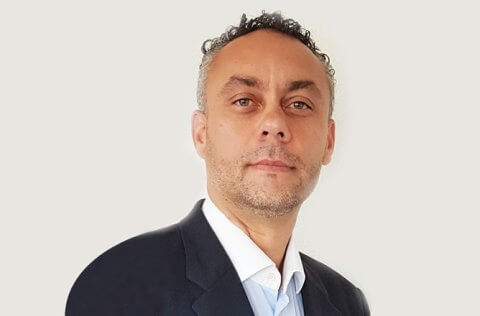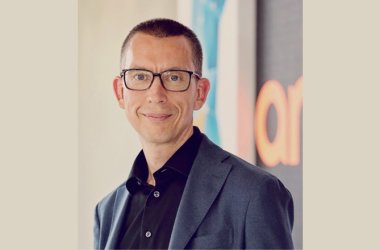CNME Editor Mark Forker spoke to Stefan Deiss, Co-Founder of the Hedera Hashgraph Association, to find out how their unique governance model has attracted some of the world’s biggest brands to develop innovative solutions on their blockchain network. 
Stefan Deiss is a serial entrepreneur, and has enjoyed a decorated career in technology and telecommunications.
He spent 11 years at Orange Business Services, before moving on to work for Zurich.
In 2013, he founded his own consulting company, and over the last 10 years has enjoyed huge success.
Deiss is the co-founder of The Hashgraph Association, which was established in 2021.
The entity is an independent and non-profit organization focused on enabling start-ups, enterprises, and government institutions around the world to develop enterprise-grade solutions on their Hedera Hashgraph network.
CNME managed to secure an exclusive interview with Deiss in an effort to learn more about the blockchain company.
As Deiss explained, Hedera is one of the leading decentralised open-source proof of stake public ledger frameworks in the marketplace, and is governed by some of the world’s leading organisations that form part of the Hedera governing council.
Some of those leading organisations include Boeing, Google and IBM.
“We established the Hashgraph Association back in 2021, out of Switzerland, in a bid to able to operate and launch various innovation programs focused on enabling enterprises, start-ups and government institutions to build enterprise solutions, and decentralise applications on the Hedera network. We then focused on how we put in place certain specific service delivery organisations that are able to address key areas of market. For example, we setup an institute focused on training, education, as well as certification, but we also setup a ventures arm that is focused on co-investments in the projects that are going through the various innovation programs that are delivered by the Hashgraph Association as mandated by the Hedera governing council,” said Deiss.
Deiss highlighted how they are on a mission to enable and empower start-ups, enterprises and government entities to build solutions on their network.
“There’s a much broader context in terms of what we are doing – and the ventures building operation is really focused on co-investors to participate in the investments taking place in Hedera powered projects, which is why we have decided to setup an innovation fund in Abu Dhabi, with $100M to enable enterprises and co-investors to participate in that fund,” said Deiss.
There is a growing demand in terms of decentralised applications globally, and Deiss explained how Hedera leverage their expertise to empower businesses to build the solutions they want to build using blockchain technology.
“We have identified that enterprises, start-ups, and government entities need and want to build their solutions leveraging blockchain, or DLT type frameworks. What we do through the innovation programs is assist them as they go through that journey of transformation to build on the Hedera network. One of the programs we have is focused on different types of projects across multiple different industries. We have a 3-stage innovation program, so if a government institution, or enterprise wants to build something on the Hedera network then what we do is take them through the 3-stages of innovation to begin with,” said Deiss.
Deiss said that their program structure is simple, and follows four key principles, which are; discover, design, develop and deploy.
“We initially begin with a learning discovery session in which we try to determine and understand what exactly they want to build. We do some ideation and mutual discovery workshops, and out of that first stage we have a good understanding of what they want to build. We then move into the second stage, which consists of visualisation, which is effectively a proof-of-concept development designed to help them have a visualisation of what exactly it is they want to build before we move into the third stage. The third stage is where we build the product, we provide them with engineering support, the technical expertise, but also the business acumen that is needed. As projects go through those 3-stages of innovation, they are receiving all the different elements to be able to not only build the technical solution, but to be able to productise it and monetise it when they exit the innovation program,” said Deiss.
Deiss added that the innovation program typically takes between 6-12 months depending on the complexity of each project, and what exactly the businesses want, or need to build.
He also outlined that those looking at investing into start-ups exiting the innovation program, are given great confidence by the fact that all companies are subject to a robust due diligence process.
“Initially, start-ups get up to $250,000 of grant funding from the Hashgraph association, enterprises receive up to $750,000, and government institutions up to $1.5m. If you take that start-up as an example, once they have exited the innovation program, they have gone through due diligence, and a venture building type of structuring of the project, and they now have a product that is being developed and is ready to go to the market. This really provides a fantastic opportunity for co-investors to engage with these projects at a very early stage, once they are ready to scale, and enter the marketplace. In addition to this, we also perform a KYC check to ensure that any projects that we are onboarding have gone through some type of sanity check, as well as reputational check to ensure that co-investors are not being damaged by some shady projects. The fact that all exiting the innovation program are subject to rigorous due diligence gives investors comfort and confidence,” said Deiss.
When asked what role multinational players like Google, IBM and Standard Bank play on the Hedera governing council, Deiss explained the nuances of the governance frameworks.
“Google, and the other governing council members all operate a node of the Hedera network, which basically means they are part of the verification transactions on the network. They play a pivotal role in the governance of the Hedera network, the consensus, as well as operating a node that validates transactions. Secondly, they are also responsible for the treasury, so essentially how the Hedera treasury is being managed in terms of grant allocations, providing funding for various types of projects, and being able to oversee the software development policies, and regulations around the Hedera network. The governing council members like Google, IBM, Standard Bank and so on, all have that type of governance role within the Hedera governing council,” said Deiss.
The FTX scandal rocked investor confidence in cryptocurrency, and the industry took a nosedive.
The SEC in the United States, has also cracked down strongly on it, but what makes Hedera so different is the rock-solid credibility it provides with its unique governance model.
“If you look at the examples of FTX, and various other collapses in the cryptocurrency market, it’s all about credibility. If these companies are willing to put their logo, and brand in association with Hedera then it does provide credibility, but not only that, it also assures and provides assurance that there is a governance model in place, which many other competing blockchain/DRT frameworks don’t really have. I think one of the key differentiators and advantages we have is the fact that we have that governing council structure. In addition to this, from an ESG perspective, it’s one of the protocols out there with the lowest carbon footprint, and these are two very important elements that are critical to when it comes to enterprises, as well as governments that want to build on the Hedera network,” said Deiss.
Deiss concluded a wonderful conversation by outlining the relationship between the Hashgraph Association and Abu Dhabi Global Market (ADGM).
He said the collaborative approach is designed to enable and empower businesses to build unique solutions on the Hedera network.
“We’re not just providing the technology, but we’re also providing funding to get businesses started. The collaboration is very much focused, not only on the enablement of local start-ups and enterprises developing solutions on the Hedera network, but also very much looking at it from a legal and regulatory perspective. We know a number of these different projects all want to build very innovative solutions, but in many cases, they are stifled by the legal and regulatory uncertainty. We want to engage with regulators, we do the same thing in India, and in Switzerland, we want to help and contribute to the shaping of the regulatory framework by bringing in those use-cases in close consultation with the regulators, so that these projects are not building something that is illegal, or breaching regulatory norms in a given jurisdiction. Like in any business there has to be an economic incentive as well, so through that collaboration if we are able to generate economic benefits for ADGM, and the ecosystem, then that’s a win-win for both,” said Deiss.





